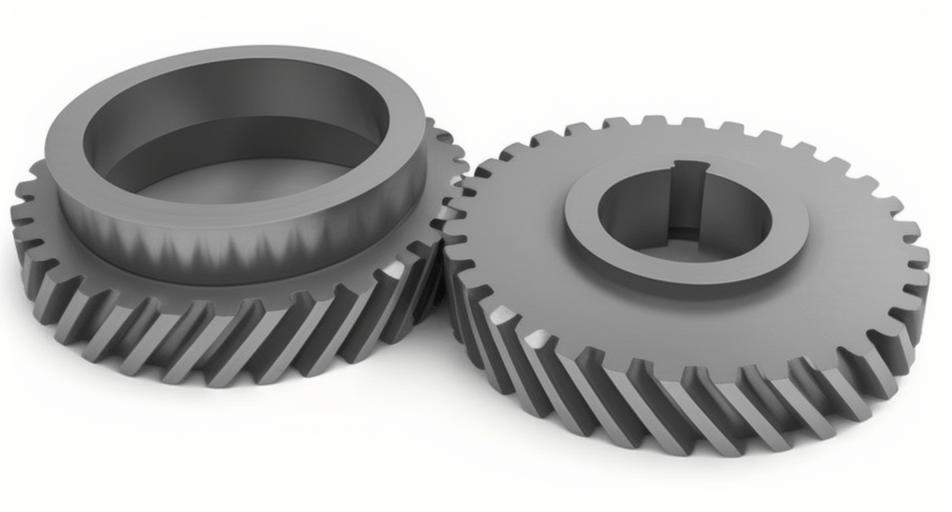This paper presents an advanced methodology for wear reliability optimization of helical gears under data scarcity conditions, employing non-probabilistic interval modeling and multi-disciplinary analysis techniques. The framework integrates Hertz contact theory, Archard wear principles, and finite element simulations to achieve optimal gear design while addressing uncertainties in geometry, material properties, and operational parameters.

1. Geometric Parameterization of Helical Gears
The geometric configuration of helical gears significantly influences wear patterns through seven critical parameters:
$$ z = \text{Number of teeth} $$
$$ m_n = \text{Normal module (mm)} $$
$$ B = \text{Face width (mm)} $$
$$ \alpha = \text{Normal pressure angle (°)} $$
$$ h_a = \text{Addendum coefficient} $$
$$ c = \text{Clearance coefficient} $$
$$ \beta = \text{Helix angle (°)} $$
| Parameter | Nominal | Tolerance |
|---|---|---|
| Normal Module (mm) | 4 | ±0.02 |
| Helix Angle (°) | 13 | ±0.065 |
| Face Width (mm) | 40 | ±0.2 |
2. Wear Prediction Model
The Archard wear equation governs the wear depth calculation:
$$ W_h = \frac{k \cdot P \cdot s}{H} $$
Where:
\( k \) = Wear coefficient
\( P \) = Contact pressure (MPa)
\( s \) = Sliding distance (mm)
\( H \) = Material hardness (HV)
3. Non-Probabilistic Reliability Analysis
Interval variables are defined for uncertainty quantification:
$$ X_i = [X_i^L, X_i^U] $$
Reliability metrics for contact stress (\( \eta_1 \)) and wear depth (\( \eta_2 \)):
$$ \eta_1 = \frac{\sigma_{HS}^c – \sigma_{max}^c}{\sqrt{(\sigma_{HS}^r)^2 + (\sigma_{max}^r)^2}} $$
$$ \eta_2 = \frac{W_s^c – W_h^c}{\sqrt{(W_s^r)^2 + (W_h^r)^2}} $$
| Performance Metric | Lower Bound | Upper Bound |
|---|---|---|
| Contact Stress (MPa) | 937.50 | 1,624.70 |
| Wear Depth (μm) | 2.31 | 22.16 |
4. Multi-Objective Optimization
The optimization model minimizes gear volume while ensuring reliability:
$$ \text{Minimize: } V = \frac{\pi m_n^2 z^2 B}{4\cos^3\beta} $$
$$ \text{Subject to: } \eta_1 \geq 2.0, \eta_2 \geq 1.2 $$
| Design Variable | Initial | Optimized |
|---|---|---|
| Normal Module (mm) | 4.00 | 3.42 |
| Face Width (mm) | 40.00 | 39.01 |
| Helix Angle (°) | 13.00 | 13.42 |
5. Verification Results
The optimized helical gear demonstrates significant improvements:
$$ \text{Volume Reduction: } \frac{3.178 – 2.380}{3.178} \times 100\% = 25.11\% $$
$$ \text{Wear Reduction: } \frac{6.306 – 5.291}{6.306} \times 100\% = 16.09\% $$
6. Conclusion
This study establishes a comprehensive framework for helical gear optimization that effectively addresses data uncertainty through non-probabilistic modeling. The methodology enables 25.11% material savings with simultaneous 16.09% wear reduction, demonstrating superior performance in reliability-constrained design scenarios. The interval-based approach proves particularly effective for helical gear systems operating under variable loading conditions with limited historical data.
